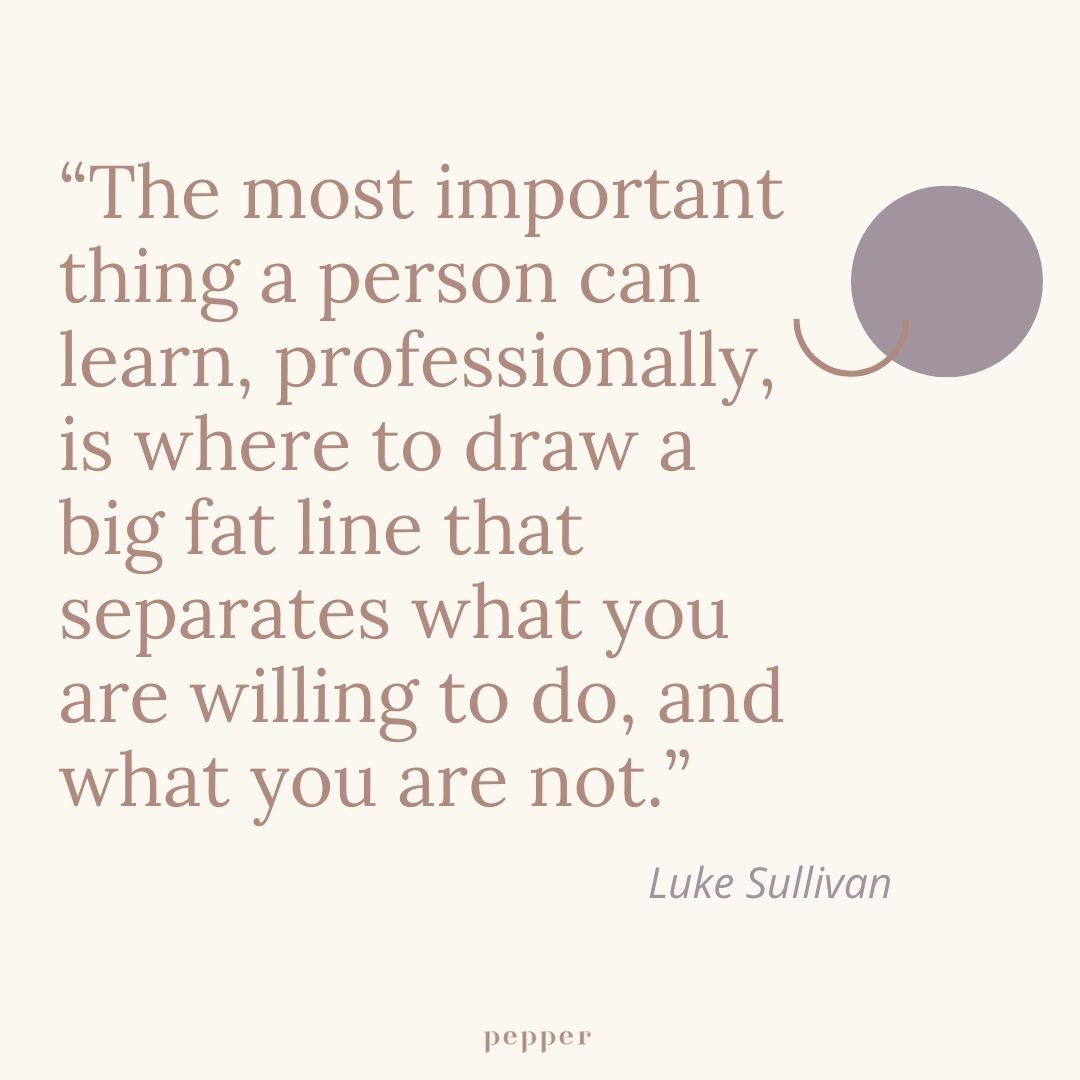Let’s face it, whether you’ve been in business for a hot minute or a bazillion years, you are eventually going to receive client complaints.
And, as much as a client complaint can suck ass crackers, you can either let it pull you down into a woe-is-me-why-does-my-client-hate-me-I-must-suck vortex of self-pity, or you can see it as a kick-ass opportunity to work on your communication skills, learn some valuable lessons, and improve the shit out of your business practices while hopefully resolving the issue.

Sometimes, though, getting those client complaints can crush your soul a little—especially if you’ve put a lot of time, heart, and work into creating the best client experience possible. And navigating those complaints from clients can also be tricky because you have to find a way to be kind and understanding while also being assertive and setting boundaries.
Holy Customer Service Management, Batman!
Here in the Pepperverse, we spend A LOT of time working on human-centric communication and emotional intelligence—both in our day-to-day dealings with our creative entrepreneurs and with each other. We make a point of always trying to communicate our intentions openly, honestly, and in such a way that there is little to no confusion by either party about what we’re shooting for. And we’re never assholes about it, even when our heads temporarily feel like they might blow off.
via GIPHY
But shit happens. Miscommunication happens. Expectations sometimes aren’t met. In other words, running a business is exactly the same as everything else in life—it can be hella unpredictable.
So when one of our badass clients complains or has an issue, we immediately roll into a problem-solving process that analyzes all sides of the issue while allowing us to still be human and feel our way through it, so we can resolve it as easily and effectively as possible.
And you know what, it works like a hot damn!
So, because we like to share the shit out of biz practices that work for us (because sharing is caring), we are sharing our process with ya’ll and can’t wait for you to try it and let us know how it goes. Whether you’re a giant corporation with an HR department or if you’re a one-person shitshow rodeo, our client complaints survival guide will totally help!
Pepper’s Client Complaint Survival Guide
Don’t respond AT ALL while you feel emotional about client complaints.
Dude, we’re human. H.U.M.A.N. When shit goes sideways, we emote. It’s what we do and it’s perfectly okay to feel a bit shitty about someone complaining about your business practices. It’s a natural reaction when you take pride in your work and try hard to do your best to create happy clients. So let yourself ride the pity bus for a few minutes while it runs the gamut of gut-wrenching gripes…and then choose to let that shit go and make a plan.
Evaluate both sides objectively.
Once you get off the bus, take a good look at the client’s complaint and evaluate the sitch. Ask yourself some leading questions and answer them honestly:
- Was there a miscommunication or several miscommunications by one or both parties? If so, make a list of what they were (be specific) so you can see exactly where shit went south.
- Did you deliver a clear, concise, and detailed explanation or outline of the services you would be providing before you began providing them? Did the client sign off on the outline or give a verbal okay?
- Did you deliver what was promised? If not, why?
- Is the client complaint difficult to fix or can it be solved easily? What steps can you take to fix it or, if you believe it can’t be fixed, is there some alternative you can offer or a compromise you can suggest?
- Without pointing fingers, ask yourself if the client is also responsible (or partially responsible) for the circumstances that led to the complaint?
Look for the lesson.
Based on Step 2, make a list of all the ways you can learn from this experience and improve client interactions and business practices from this point out. Perhaps you can take steps to be clearer with your communication, be more precise with your outlines or contracts, get clients to sign off on tasks before they are started, change your social and marketing wording so it’s clearer and easier to interpret, etc. Now take that list and make an action plan that details the changes you need to make to hopefully ensure you will avoid another complaint like this in the future.
[Note: Even if the entire situation has nothing to do with your end of things, you can STILL learn something from it, even if it’s just how to better respond to rude comments or people who are never happy or satisfied.]
Prepare to speak with the client and resolve the issue.
Now that you have a much better overall understanding of what happened and where your client is coming from, you are in a better place to respond and offer solutions. We recommend requesting a phone call with your client (if that is plausible) because human-to-human interaction is so much more effective than the written word—less room for misreading and misinterpreting, more room for open, honest, compassionate conversation and problem solving. Let them know you have a good idea of what’s happened (without pointing fingers or calling blame to either side), outline what you’re willing to do to resolve the situation, and be kind and professional.
Don’t take shit from clients.
Sometimes, even if you do all of the above steps and respond with professionalism and kindness to the best of your ability, people will STILL be rude, unkind, and ignorant. If Steps 1 through 4 don’t work and the client continues to be belligerent and doesn’t show any sign of actually wanting a resolution, it’s time to cut them loose. There is never any reason you should allow any client to talk down to you, disrespect you, or treat you poorly. If this happens, let them know you won’t stand for it, let them know you’ll be letting them go, and wish them the best. Because, as writer and advertising guru, Luke Sullivan says, “The most important thing a person can learn, professionally, is where to draw a big fat line that separates what you are willing to do, and what you are not.”

Even though dealing with customer complaints can be a freaking challenge and a half, they really are always a huge opportunity for us to learn, grow, and stretch ourselves out of our people-skills comfort zone. So next time you open your email to see a subject line that makes your heart sink and your palms sweaty, remember that it’s all part of living the biz life. Look at it as an opportunity to do or learn something rad that you’ll be able to add to your biz toolbox.
And, if you need a little extra help in the communication department or if you are really just not cool with any kind of conflict, we know a gal who can help. Her name is Jess Robson and she is pretty dang good at that whole human-centric communication gig for businesses.

Did you know that Pepper is made up of a team of creative peeps who specializes in modern marketing and content creation for creative entrepreneurs around the world? #truestory If you are run a creative biz and think you could use some help taking your biz to the next level with some fun, innovative, and fairly hip peeps, hit us up!
Posted by Jo Johnson

Content Lead at Pepper, craft beer lover, human connection craver, and doggo worshipper.